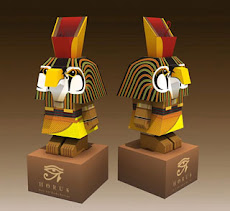Poka Yoke
Poka yoke (poh-kah yoh-kay) is a Japanese term for mistake proofing. Shigeo Shingo, an industrial engineer for
As outlined by Shingo, poka yokes can either be warnings of potential errors or controls preventing errors. Warnings merely indicate an error is occurring whereas controls prevent further advancement until the problem is addressed. Stop and consider all the poka yokes in your everyday life or employment. One warning poka yoke that might come to mind is the continuous beeping sound or flashing light when your bankcard is ejected from the ATM machine after a transaction. This is a mechanism to prevent the customer from leaving the card in the machine. Ever try to put a round peg in a square hole? This concept is a control poka yoke applied to medical gases. Regulators that attach to gas tanks have a unique configuration depending on the type of gas is it intended to administer. Thus, an oxygen line cannot be placed on any other tank, such as a compressed air or a carbon dioxide tank. Another example may be an assembly job that has a specific kit containing all the screws, nuts, and bolts for that one product, rather than procuring the items from one central location. If parts are left over in the kit, the assembler is alerted to the mistake and can address the problem at the time of assembly. These examples have a common theme. They are processes that are repetitive, mundane and have a high prevalence of error. Often applying simple poka yokes are inexpensive and can easily result in reduced defects.
Although Shingo’s efforts were focused on the manufacturing industry, the poka yoke concept can have even more merit in the service sector. In both areas the customer is the mainstay. However, in the service sector it becomes a challenge to place a statistical measurement on the intangible aspects of customer service. As a result, poka yokes could have a great impact in the service industry because they place fail-safe measures on processes that can make a difference in maintaining a relationship with the customer. They only require a good or bad value placement on the process. As a result, these measures are easily applied to intangible service processes. Furthermore, service industries must identify mechanisms that establish a customer relationship or prevent the customer from misuse of their product. For example, at the point of sale, some retailers require entry of the customer’s eye color prior to the entry of sales information. Eye contact establishes a relationship between the customer and the sales person. When involving the customer, a firm also deals with liability issues of product misuse by the customer. They must apply poka yokes to the product to prevent customer misuse. An example which may come to mind is the automatic shut off bar on a lawn mower handle.
Front office activitities are a key focus to establishing poka yokes in the service industry. In a service organization, back office activities are akin to poka yoke principles in manufacturing. That is, applying warnings or controls to worker activities. Front office poka yokes must have further refinement. Errors should be identified by either server errors or customer errors. As Appendix 1 exhibits, server errors are classified as error in the task, the treatment, or the tangible aspects of the service. Whereas, customer errors are classified in the preparation for the encounter, the encounter, and the resolution of the encounter. Each of these areas should be isolated to identify any potential for error, either by the server or the customer. Therefore, a service organization can identify those processes that have a high prevalence of error and apply specific poka yokes as necessary.
A systematic approach to applying poka yokes will result in success. First, a blue print of the process should be completed to pinpoint areas where mistakes occur. Poka yokes may already be in place and may need to be refined as they are identified. Keep in mind that the entire process must be scrutinized. This includes interaction and follow- through with the customer. From here, errors in the process should be identified. As previously described, in the service industry, these are either server errors or customer errors. Once the error is isolated, creative efforts can be channeled to assign specific warning or control poka yokes to the situation. Again, the objective is to avoid errors in the process and therefore eliminate defects in the product. The focus should not be on the individual but rather on the process. Because these processes often involve repetitive procedures, it only stands to reason to elicit the suggestions of those individuals continually involved in the process. Often these individuals have simple solutions because they work with the process day in and day out (Henricks, 1996). A unique, simple example comes from the L’Hotel Louis XIV in
Poka yoke is a term for avoiding errors. This technique, initially advocated by Shigeo Shingo, has validity both in manufacturing and service. By identifying errors in the process, defects can be eliminated in the product. Often times, poka yokes are most effective in repetitive tasks, where memory and attention to detail is crucial. In turn, these tasks are very prevalent to errors. Placement of poka yokes within these tasks are usually inexpensive and result in measurable savings by reducing defects. By using a systematic approach, a manager can identify areas where poka yokes can benefit. Creative problem solving can be elicited from those involved in the process to design a unique poka yoke, which results in products with zero defects.
Examples of Errors:
Incorrect work
Task :
· Work not requested
· Work completed in the wrong order
· Work completed too slowly
Treatment :
· Failure to acknowledge the customer
· Failure to listen to the customer
· Failure to react appropriately to the customer
Tangibles :
· Failure to clean facilities
· Failure to provide clean uniforms
· Failure to control noise, odor, light, and temperature
· Failure to proofread documents
* Customer Poka Yokes
Examples of Errors:
Preparation :
· Failure to have materials available
· Failure to understand their role in the transaction
· Failure to engage in the correct service
Encounter :
· Failure to remember steps in service process
· Failure to follow system flow
· Failure to specify desires
· Failure to follow instructions
Resolution :
· Failure to signal service failures
· Failure to learn from experience
· Failure to adjust expectations
· Failure to execute post encounter actions





